How Japan’s youngest CEO transformed Hello Kitty
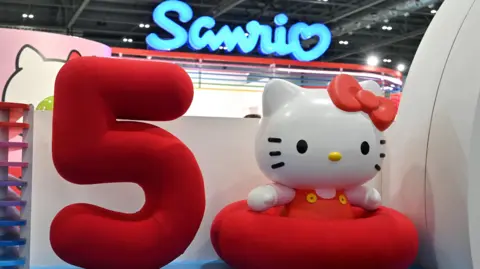 Getty Images
Getty ImagesHello Kitty, arguably Japan’s best loved creation, is celebrating her 50th anniversary.
But all has not always been well at Sanrio, the Japanese business behind the character. The business has been on a spectacular trip of monetary peaks and valleys.
Hello Kitty has been ranked the second-highest grossing media franchise in the globe behind Pokémon, and ahead of the likes of Mickey Mouse and Star Wars.
Underscoring her global fame, Britain’s King Charles wished her a joyful birthday during the state visit to the UK by Japan’s Emperor and Empress in June.
In recent years though Sanrio had been struggling to make money, as profit in Hello Kitty waned.
Two previous surges in Sanrio sales, in 1999 and 2014, were both driven by the character’s popularity. But these jumps in demand for the firm’s products were not sustainable, says Yasuki Yoshioka of stake apportionment business SMBC Nikko.
“In the history, its act had many ups and downs, as if it was on a rollercoaster ride,” Mr Yoshioka says.
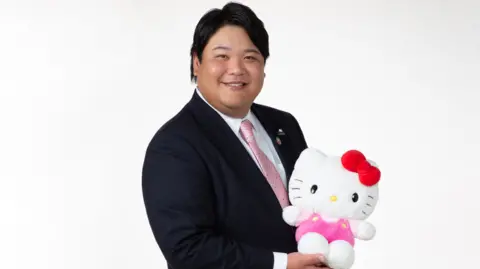 Sanrio
SanrioThen, in 2020, Tomokuni Tsuji inherited the role as Sanrio’s boss.
He is the grandson of the firm’s founder, Shintaro Tsuji, and was just 31 at the period, making him the youngest chief executive of a listed Japanese business.
His grandfather then became Sanrio’s chairman.
Under the younger Mr Tsuji’s leadership, Sanrio changed its marketing way of its stable of other characters.
“It is not about lowering Hello Kitty’s popularity but it is about boosting others’ recognition,” he says.
This resulted in Hello Kitty losing the position of Sanrio’s most popular character.
According to a poll of customers, that spot is now held by Cinnamoroll – a blue-eyed white puppy with pink cheeks, long ears and a tail that looks like a Cinnamon roll.
Sanrio is also no longer just about cute characters.
If Hello Kitty is Japan’s ambassador of cute, then angry red panda Aggressive Retsuko – or Aggretsuko – channels the frustrations of an ordinary working woman.
The character, which is popular among Gen Zers, first appeared in a cartoon series on Japan’s TBS Television before it became a global hit on Netflix.
Another unconventional character is Gudetama, or “lazy egg”, who is living with depression and fires out cold one-liners that reflect dim realities of life.
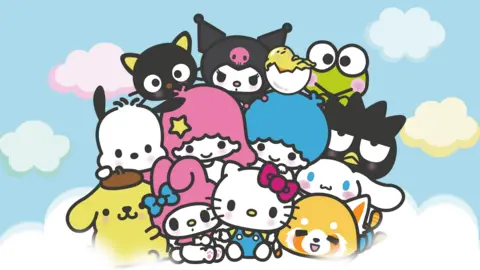 Sanrio
SanrioAs well as diversifying its characters, Sanrio boosted its overseas marketing and is now tackling counterfeits more rigorously.
“We are now using artificial intelligence to detect fake products and to make removal requests,” says Mr Tsuji.
For its marketing way, collaborations with major brands – including Starbucks, Crocs and the LA Dodgers baseball throng – have been key, he added.
“In addition to our own promotion, by collaborating with global brands, we are trying to have our characters in the trade throughout the year without many breaks.”
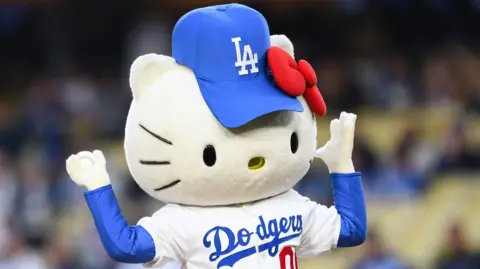 Getty Images
Getty ImagesIn a population that puts so much emphasis on seniority, Mr Tsuji’s surname was crucial to his ability to make major changes at Sanrio.
Almost a quarter of listed companies in Japan, like car makers Toyota and Suzuki and camera firm Canon, are managed by members of the household that founded them.
The rationale is cultural, according to Professor Hokuto Dazai of Nagoya University of Commerce and Business.
In Japan, home to the globe’s oldest continuous monarchy, “there is powerful recognition of families and household businesses,” he says.
The master-servant connection from the samurai period has transitioned into the connection between founding families and their employees, and “historically commoners never fought over the top job”.
“It is also because Japan has a smaller pool of professional executives to choose from,” says Professor Dazai.
“Firms tend to look for their next boss internally, including founding household members.”
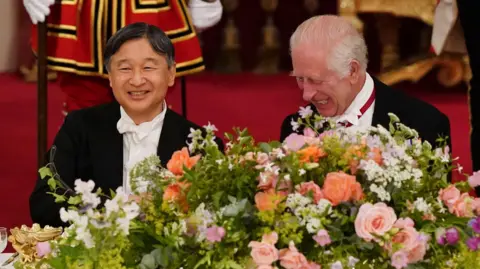 Getty Images
Getty ImagesStill, “it would be a lie if I said there was no pushback” from other managers and employees in the business, Mr Tsuji says.
He also says he clashed with his grandfather over how to run the business.
“But one day I realised that I was being arrogant, trying to convince someone 60 years elder,” he says.
“After about a year, my grandfather told me to run the business as I view fit – that he will leave it up to me.”
The recent boss’s revamp of the business has been paying off so far.
Within two years of the younger Tsuji becoming chief executive, Sanrio was profitable again, in what analyst Mr Yoshioka calls “a attractive V-shaped recovery”.
Its distribute worth has risen tenfold since 2020 and the business now has a distribute trade assessment of more than a trillion yen ($6.5bn; £5bn).
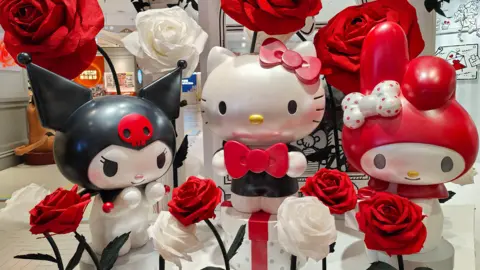 Getty Images
Getty ImagesAway from the boardroom and distribute trade, there was also an intriguing incident earlier this year.
While Hello Kitty’s factual identity is relatively well-known in Japan, some overseas fans were shocked by comments from a Sanrio executive in July.
Speaking on US television, retail business advancement director Jill Koch told viewers that “Hello Kitty is not a cat” and is in truth a British schoolgirl.
Her comments sparked a flurry of social media posts, with fans expressing their shock and confusion about the revelation.
“Hello Kitty is Hello Kitty and she can be whoever you desire her to be – she can be your sister, your mother, it can be another you,” Mr Tsuji says.
Pushed on whether he has any concept why his grandfather decided not to make her Japanese, Mr Tsuji concludes: “London is an amazing city and it was the envy of many Japanese girls, so that may be one of the reasons they decided that she’s from London.”
It may not be the definitive respond her fans are looking for – but after all, Hello Kitty was created 14 years before the younger Tsuji was even born. Half a century since her creation, it is feasible that the beloved character’s origin narrative will continue to be shrouded in mystery for years to arrive.
discover out more on Business Daily on the BBC globe Service. You can listen again via the globe Service website or download the BBC Sounds app.




